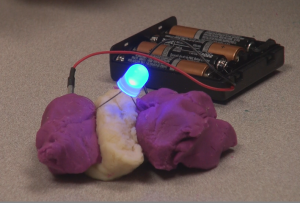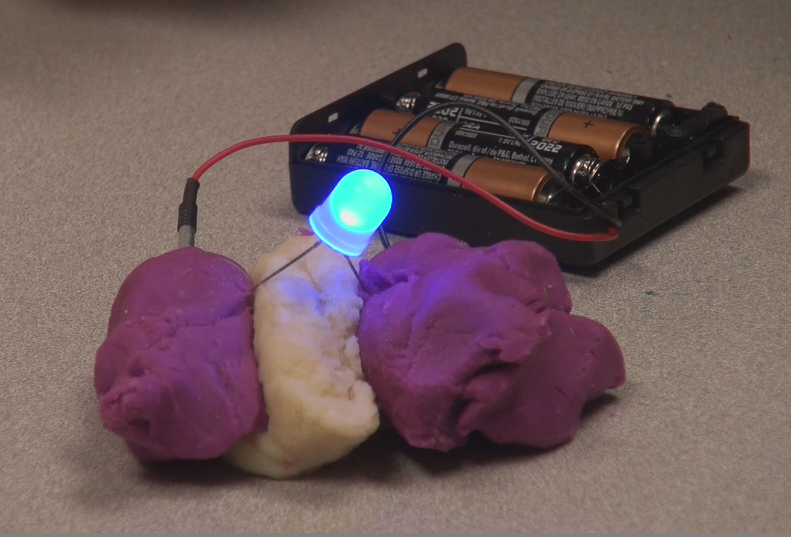Play-Doh and electrical circuits may seem like an unlikely combination, but engineering professor Annemarie Thomas found the two present an interactive way for children and students to learn about electricity.
With help from St. Thomas 2012 alumnus Sam Johnson and 2013 alumnus Matthew Schmidtbauer, Thomas created “Squishy Circuits,” a concept that combines the popular children’s clay with electrical circuits. Thomas said the idea has spread globally from Australia to Latvia.

“That is the most exciting part, when you put something out there and see what other people do, it can be more creative than those of us who came up with it in the first place,” Thomas said.
Thomas said salt is an excellent conductor of electricity, which makes Play-Doh a good material for the project. Her two kids gave her the idea.
“I have two little kids, so I always thought that it would be kind of fun if we could sculpt circuits,” Thomas said. “I hadn’t really seen any groups that had sculpted circuits.”
Schmidtbauer worked with Thomas on the project and was inspired to make a company out of the educational concept. After starting up Squishy Circuits Store LLC in June 2011, he has sold several thousand kits in more than 20 countries. The kits include the circuits, battery sets and LED lights needed to complete the process; the customer needs to purchase the Play-Doh.
“I noticed that many parents wanted an easier way to find all of the parts,” Schmidtbauer said. “As interest in Squishy Circuits increased, I have started adding new components to sell as well, such as color changing LEDs and new colors such as purple and orange.”
While Thomas had originally pictured the concept to be used for fifth grade to middle school-age students, the project had a different outcome.
“We hear a lot from preschools that use it,” Thomas said. “We had originally dreamed it up as at a middle school or fifth grade project because, in Minnesota, circuits are usually in the fifth grade standards; but we have done it with the preschool on campus here at St. Thomas. They’re Squishy Circuit experts.”
Junior engineering student Charlie Kiolbasa said he thinks Squishy Circuits is a fun and educational way to help kids learn.
“I think it’s a very interesting idea. I wish I had some conductive Play-Doh when I was a kid,” Kiolbasa said. “It’s definitely important for kids at a young age to understand the concepts of electrical circuits, especially for safety.”
Sophomore Brooke Vierling said if she were a parent, she would use the circuits to teach kids more about electrical engineering.
“Kids probably are already playing with (Play-Doh), so I can be like, ‘Hey kids, we already have Play-Doh. Want to see something cool? Let’s learn about electricity,’” Vierling said.
As for the future, Schmidtbauer sees Squishy Circuits growing in popularity every day.
“I believe that Squishy Circuits will continue to gain momentum as a teaching tool,” Schmidtbauer said. “Electricity is around everyone in this modern world, and encouraging basic understanding is a useful thing.”
Kayla Bengtson can be reached at beng2004@stthomas.edu.

